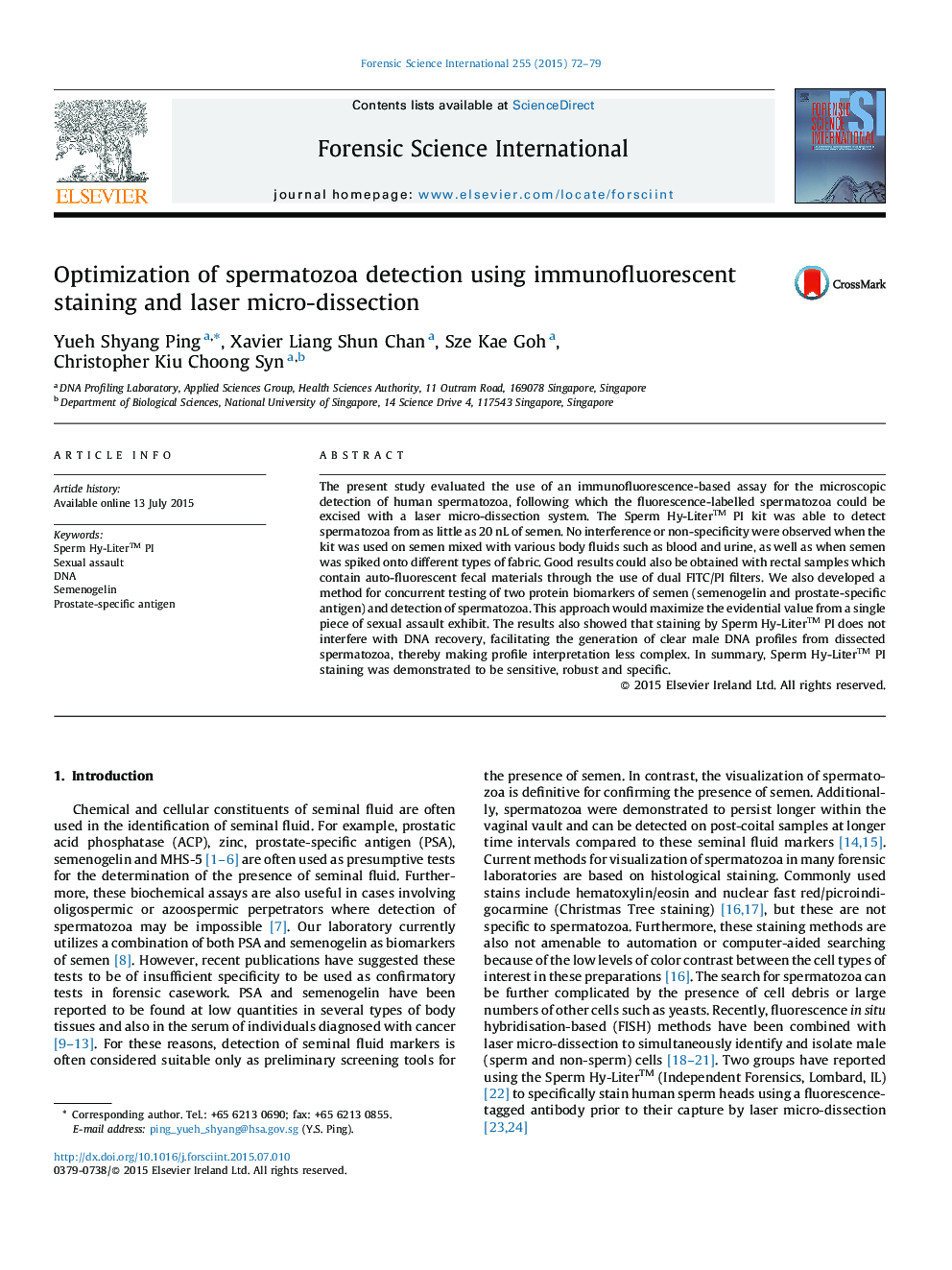| Article ID | Journal | Published Year | Pages | File Type |
|---|---|---|---|---|
| 95311 | Forensic Science International | 2015 | 8 Pages |
•Sperm Hy-Liter™ PI kit could detect spermatozoa from as little as 20 nL of semen.•Sperm Hy-Liter™ PI did not display cross-reactivity with other body fluids.•Fabrics, condom lubricants and fecal materials did not cause interference.•Sperm Hy-Liter™ PI staining was compatible with downstream DNA recovery.
The present study evaluated the use of an immunofluorescence-based assay for the microscopic detection of human spermatozoa, following which the fluorescence-labelled spermatozoa could be excised with a laser micro-dissection system. The Sperm Hy-Liter™ PI kit was able to detect spermatozoa from as little as 20 nL of semen. No interference or non-specificity were observed when the kit was used on semen mixed with various body fluids such as blood and urine, as well as when semen was spiked onto different types of fabric. Good results could also be obtained with rectal samples which contain auto-fluorescent fecal materials through the use of dual FITC/PI filters. We also developed a method for concurrent testing of two protein biomarkers of semen (semenogelin and prostate-specific antigen) and detection of spermatozoa. This approach would maximize the evidential value from a single piece of sexual assault exhibit. The results also showed that staining by Sperm Hy-Liter™ PI does not interfere with DNA recovery, facilitating the generation of clear male DNA profiles from dissected spermatozoa, thereby making profile interpretation less complex. In summary, Sperm Hy-Liter™ PI staining was demonstrated to be sensitive, robust and specific.
